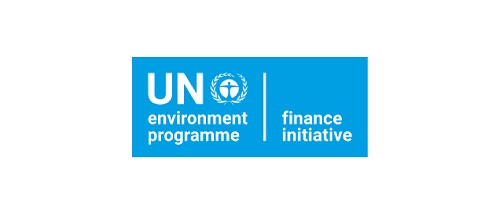‘Climate resilience strategies for insurance supervisors around the globe’ – Anna Sweeney, Chair of the Sustainable Insurance Forum (SIF) and Executive Director – Insurance at the Bank of England
Speech delivered at the Milliman Climate Resilience Forum – 3 March 2021
Thank you to Milliman for inviting me to speak today. This Forum is an excellent example of connecting industry, regulatory and academic leaders to discuss how to enhance climate resilience – and, thanks to the increasing familiarity of virtual events, we are able to benefit from a wide range of international perspectives. I’m delighted to be here as Chair of the Sustainable Insurance Forum – indeed my first public event in that capacity. Having been set up by Commissioner Dave Jones of California in 2016, the SIF has gone from strength to strength under the leadership of Geoff Summerhayes as a global network of insurance supervisors working together to strengthen responses to sustainability and climate change challenges facing the insurance sector. In the short time I’ve been involved with the SIF, I’ve been struck by the degree of awareness and commitment to action on climate and sustainability issues from regulators globally.
When it comes to climate risk we are beyond the debating phase. Events – like this one – have become much less about identifying how climate risk manifests, and much more focused on action. And the calibre of the participants over the three days here underlines how seriously the industry is taking it. Significant steps have been taken across the supervisory community to establish expectations around climate risk management and more is expected. Firms themselves are building their internal capabilities to better measure, price and manage climate risks, while also exploring the development of new services and products in an effort to mitigate climate risk protection gaps.
Insurers and regulators have a shared responsibility to continue to advance their thinking and take action. Neither industry nor the regulatory community have an obvious advantage in terms of information or experience of climate risks, and so the most effective response will be one in which everyone plays a part. This pace of change will only increase in the coming months as we build towards the UN COP26 in Glasgow.
To illustrate the how far this momentum has already taken us: in 2015 the Bank of England published a report which made the first links between financial risks in insurers. This was followed in 2019, when we became the first regulator to publish supervisory guidance, which sets out expectations on how insurers and banks should approach the financial risks arising from climate change. The supervisory statement encourages insurers to focus on four aspects in developing an enhanced approach to managing climate risk: governance, risk management, scenario analysis, and disclosure.
The Bank of England might have been the first to publish these expectations, but we haven’t been standing alone. With the support of the IAIS, the membership of the UN SIF is at the helm of the supervisory response to climate and sustainability challenges facing the insurance sector. Since its formation in 2016 – as a small group of forward-looking supervisors, seeing the challenges that were coming down the line – the SIF is now at 30 members. This network facilitates knowledge sharing, dialogue and policy innovations to address climate risk to insurers across the globe – combined, the network represents US$5 trillion in gross insurance premiums and covers 92% of the global insurance market.
The SIF has increasingly become the pre-eminent voice for insurers in this space – and an important representative for insurers at fora such as the NGFS. Thanks to the collaboration of its members and its close partnership with the IAIS, the SIF’s achievements over the last few years include:
- The launch of the public version of the ‘Question Bank on Climate Change Risks to the Insurance Sector’, which means the industry now has access to the types of questions that supervisors may ask entities regarding climate change financial risks.
- A joint Issues Paper with the IAIS on ‘The Implementation of the Recommendations of the Task Force on Climate-related Financial Disclosures (TCFD).
- And currently in development, a joint SIF/IAIS Application Paper on the Supervision of Climate-related Risks in the Insurance Sector. This will be a clear marker for the international supervisory perspective when it launches later this year.
The wide ranging attendance here today – and the expanding reach of the SIF – suggests that many of the regulatory community are already invested in coordinated, global action. But for the avoidance of doubt, let me set out why I think a harmonised, international approach is so important.
- It creates clear parameters for firms across the financial system – and operating across different jurisdictions – in setting their strategy to respond to climate risk and sustainability challenges.
- And a consistent regulatory approach reduces the likelihood of a competitive advantage emerging in those jurisdictions that are not enforcing the same standards.
To illustrate this, I’d like to take disclosure.
Effective disclosure of climate risks is a crucial tool to promote risk management and market discipline. It provides meaningful information to policyholders to make decisions on insuring risks, to market participants to make decisions about providing resources to an insurer, and to enable comparison between firms. The Recommendations of the TCFD have become the global standard for voluntary disclosure of climate risks and opportunities – and the implementation of these standards is becoming more embedded across the globe. As well as the UK, a number of regulatory authorities have leveraged elements of the TCFD framework in setting supervisory expectations – including the Australian Prudential Regulation Authority, Monetary Authority of Singapore and the European Commission. In the US, the California Department of Insurance and the Washington State Office of the Insurance Commissioner are working with other state-level regulators to reference the TCFD recommendations within the National Association of Insurance Commissioners Climate Risk Disclosure Survey – a mandatory initiative in several states. And in a letter to regulated CEOs late last year, the New York DFS, set out its expectation that all regulated firms start developing their approach to climate-related disclosures with reference to the TCFD Recommendations.
But given the urgency of the climate crisis, a voluntary approach may not be sufficient to yield the quality and consistency of climate disclosures to enable market participants to make decisions about how insurers are taking action on climate change. Although insurers are generally considered to be slightly ahead of peers in the wider financial services industry, only 15-20% of insurers have made plans to or are already implementing the TCFD Recommendations. In 2020, New Zealand became the first country to propose legislation making TCFD disclosures mandatory for financial institutions and the UK has set out a roadmap towards mandatory TCFD-aligned disclosures over the next five years.
This commitment to increasing transparency at a jurisdictional level is a great step forward. But an internationally harmonised approach will be critical if we want to get comparability and consistency across institutions. The SIF, with the IAIS, has consulted on an Application Paper on the Supervision of Climate-related Risks in the Insurance Sector. This will set out guidance to assist supervisors in implementation and provide examples of good practice. Including reference to the IAIS Standards that are most relevant in determining how comprehensively insurers have publicly disclosed the interplay between climate change and their business profile. Through this paper, SIF is aiming to promote a globally consistent approach to addressing climate-related risks in the supervision of the insurance sector, including public disclosure.
But market discipline – supported by disclosure – and monitoring of risk is only the first layer of a prudential response to climate risk. I spoke recently about the overall resilience of the UK insurance sector; my remarks were predicated on a three-pillar regulatory framework comprising disclosure, risk management and capital requirements. In the case of climate, I think of these three pillars as a progressively deeper embedding of the realisation that climate change is a genuine risk:
- Stage 1: you recognise climate change is a risk, but you don’t know much about it. So all you can do is report on it. This is Pillar 3 – disclosure.
- Stage 2: you classify and systematise your understanding of this risk, embedding it in your risk management – Pillar 2.
- Stage 3: you follow up this greater understanding of the risks by ensuring your risk-based capital calculation is consistent with what you’ve learnt.
I’ve talked about disclosure. And integration of climate-related risks into insurers’ governance and risk management has been another core area of regulatory and industry focus. In the UK, we expect firms to fully embed climate risk into their operations by the end of 2021.
For insurers subject to Solvency II, the framework is not designed to manage risks that materialise in the distant future and many of the existing tools are inadequate to motivate firms to manage climate risk. Hence, stress and scenario analyses are a vital tool. Without the exploratory scenario from the PRA’s 2019 Insurance Stress Test, we wouldn’t have the insight that in a potential extreme physical climate change scenario, a 1-in-100 year loss may in future exceed today’s 1-in-1,000 year loss.
By sizing the financial system’s exposure to climate-related risks over the longer term, we can identify how firms need to respond now to ensure they remain resilient over the coming years. As a result, a number of regulators are now integrating climate scenarios into their supervision of insurers, with this objective in mind.
Although we are not using climate scenario analysis to directly set capital requirements – that is not the objective of the Bank of England’s Biennial Exploratory Scenario, at least – as a prudential supervisor, our aim is to ultimately embed climate risk across all supervisory areas. We know that there is increasing appetite among insurers to invest in green assets, but the potential of green-washing and lack of data on newer asset classes makes this challenging. We expect firms to think about how climate impacts both sides of the balance sheet and – as with all risks – should be forming a judgement-based view on whether capital should be held against climate risks. We should be open to the possibility of factoring climate risk into capital requirements. In fact, it would be strange, in a risk-based regulatory framework, to have no capital implication of recognising a risk.
In the UK we will be considering what options there are to embed climate risk into capital policy. And it is sensible to start by assessing the extent to which existing capital frameworks currently – or have the capacity to – include climate considerations.
For example, credit ratings are the central metric in Solvency II to determine the riskiness of fixed income assets. If credit rating agencies more comprehensively account for climate and sustainability considerations in their credit assessments – which seems to be the direction of travel – there would be a direct impact on many insurers’ capital requirements. This is certainly one of the minimum factors that the PRA expects firms to consider when conducting its own internal credit assessments.
This might not completely reflect the end-state we want to get to, but it is certainly a good exercise to start with.
I began my remarks with the observation that awareness amongst the regulatory community of the financial risks from climate change and the commitment to act has increased significantly. And I hope that this momentum continues.
But regulatory action is not the only means to make progress. We should encourage public-private partnerships like the Insurance Development Forum (IDF), which can mobilise the insurance industry towards a more ambitious climate resilience agenda. The IDF is actively engaged with the COP26 agenda and deliverables where the insurance industry can specifically contribute: optimising the use of insurance and its related risk management capabilities to build greater resilience and close the protection gap in climate vulnerable countries.
It is easy to become overwhelmed by the myriad developments across the climate change and sustainability landscape – as well as the limitations that we (regulators and industry) face with data and modelling tools. Particularly as new challenges continue to present themselves on the horizon. In its two-year work programme, the SIF will be undertaking a scoping study on the financial risks of biodiversity loss. This follows work by the DNB who have already produced a report exploring biodiversity risks for the Dutch financial sector, which estimated that 36% of all investments from Dutch financial institutions would be lost if the ecosystem services underpinning them were no longer available. That’s a startling fact and one which highlights the complexity and uncertainty that still surrounds the extent and depth of sustainability issues.
The message I’d like to leave you with is that no single actor can solve these issues alone. The commitment – through the SIF and IAIS, among others – to coordinated action and sharing of best practice is essential given the global nature of climate change impacts. So is collaboration between the global regulatory community and the insurance industry; private and public actors must equally play their part to help rewrite the climate narrative unfolding on the horizon.
Our challenge is significant – but I hope not insurmountable. Through my Chairmanship of the SIF I look forward to building on the foundations of progress that have already been made and to working with the international insurance community to mitigate the financial impacts of climate change.
















































